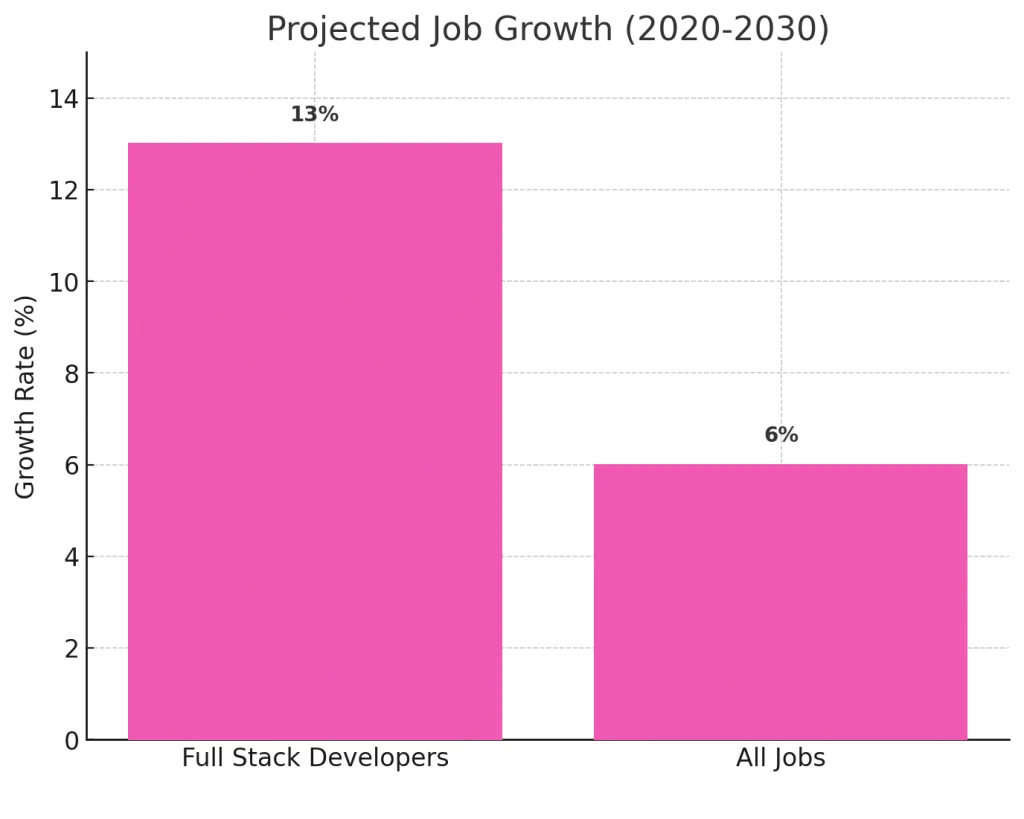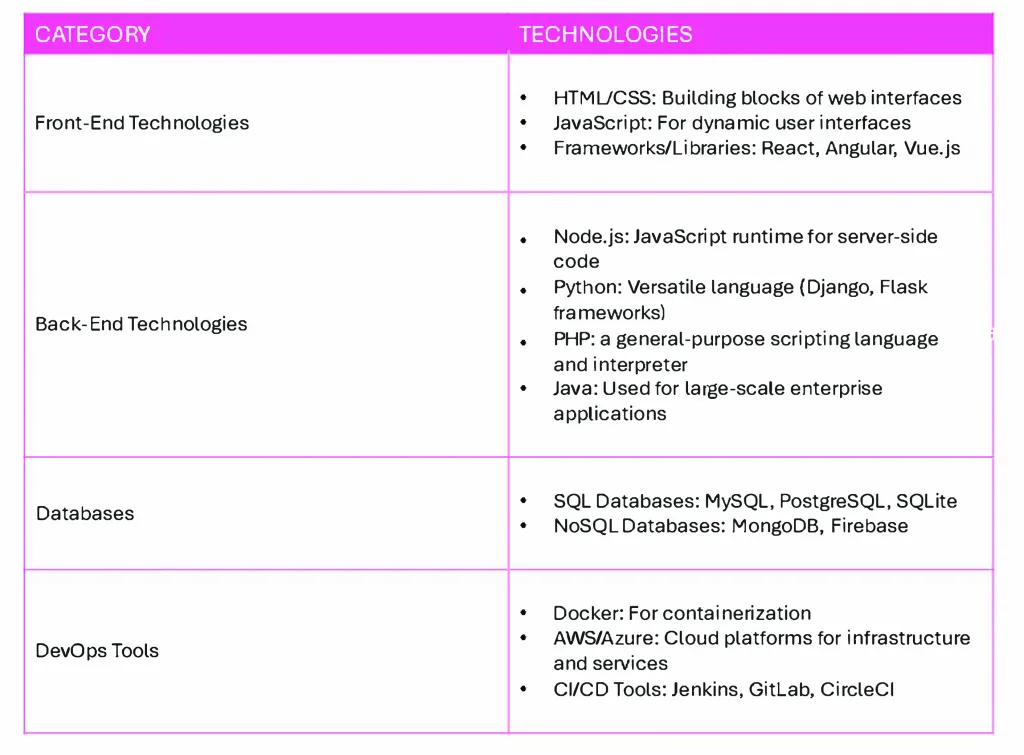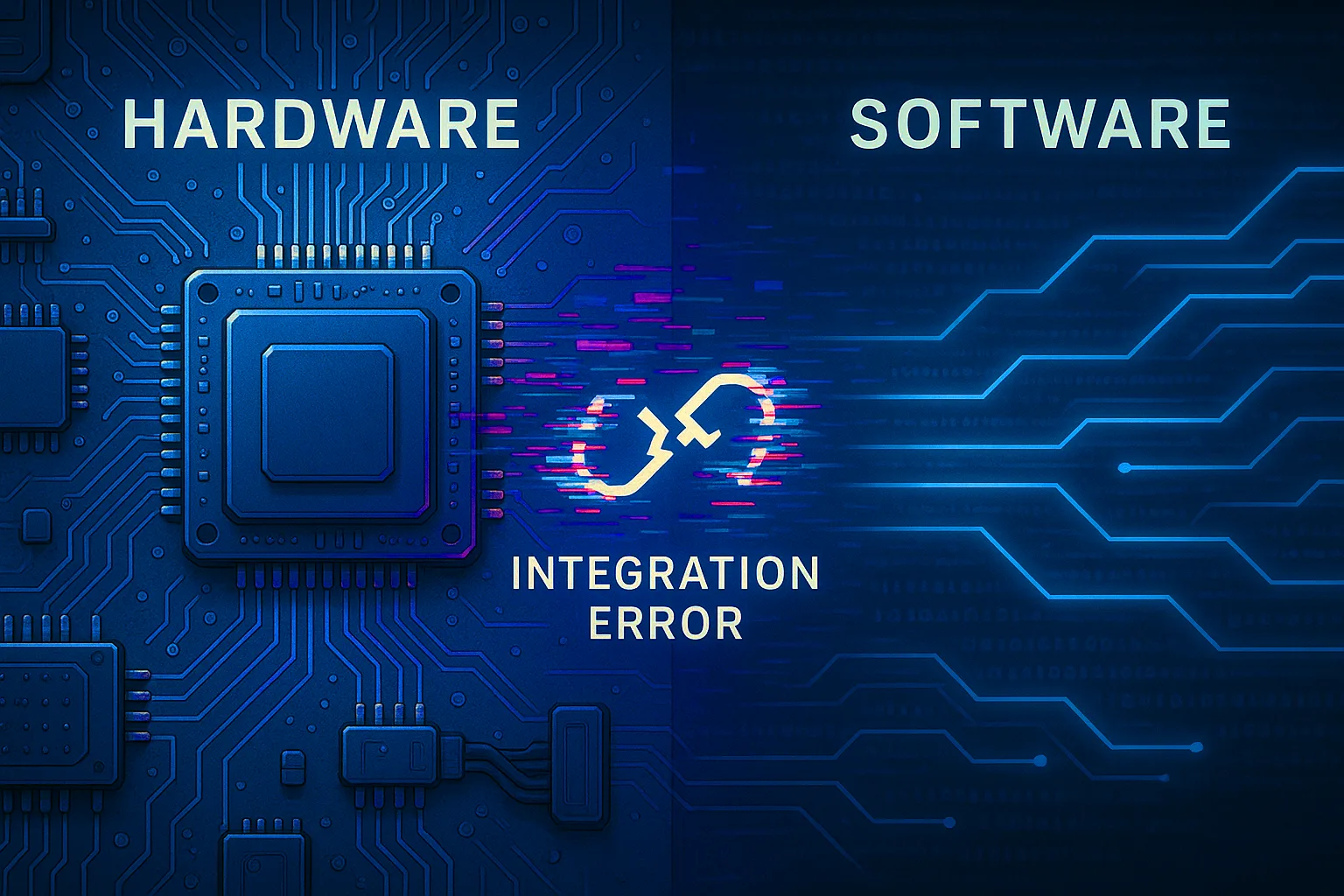Imagine building a house. You have one team working on the interior design—the layout, colors, and furnishings that make the space inviting and functional. Meanwhile, another team focuses on the structural elements—the foundation, plumbing, and wiring that ensure the house stands strong and works efficiently.
In software development, it’s much the same. Traditionally, teams split these responsibilities, with front-end developers crafting the visible, user-facing parts of the application and back-end developers handling the core systems that keep everything running smoothly.
But today, a new kind of builder—the full-stack developer—has stepped in, bridging the gap between the front and back. Full-stack developers bring a unique versatility, capable of working across both realms, and in today’s fast-paced, deadline-driven world of technology, their role has never been more valuable.
In this blog, we’ll explore what full-stack developers do, the value they bring to organizations, the market demand for these versatile developers, the languages and tools they use, and the challenges they face.
What Is a Full-Stack Developer?
A full-stack developer is a software engineer who has the capability to work on both the front end and the back end of an application. They possess the skills to handle everything from designing user interfaces and creating APIs to managing databases and configuring servers. In essence, a full-stack developer can take an idea from concept to production, working on all layers of an application’s architecture.
While front-end developers typically work with technologies like HTML, CSS, and JavaScript frameworks to build user interfaces, and back-end developers focus on server-side logic, databases, and APIs, full-stack developers have the skills to do both. They are “jacks of all trades,” equipped to handle a wide range of tasks across the entire software stack.
Benefits of Full-Stack Development
- Versatility
The adaptability of developers skilled in both front-end and back-end tasks makes them invaluable assets in complex projects. Their ability to shift seamlessly between different layers of the tech stack enhances team synergy and shortens development cycles. This versatility reduces bottlenecks, enabling them to troubleshoot issues across the entire system independently, often preempting the need for additional input from specialized team members.
- Cost-Effectiveness
For startups and small to mid-sized companies, bringing on full-stack developers can offer a cost-effective solution. Rather than hiring separate specialists, a versatile engineer can manage both aspects of development, leading to leaner teams without compromising on product functionality. This approach maintains efficiency while ensuring robust, full-featured solutions.
- Faster Development and Deployment
With full-stack developers, the handoff between front-end and back-end development is streamlined. Since they understand both sides of the stack, they can quickly address issues that would otherwise require collaboration between different specialists. This makes the development process more efficient, allowing for faster iteration, testing, and deployment of applications.
- Better Communication and Collaboration
Engineers with expertise across the full stack can serve as effective bridges between front-end and back-end teams. Their broad understanding of the project enables them to align both sides, fostering clear communication and shared objectives. This role minimizes miscommunication and enhances overall project cohesion.
Market Demand
The demand for full-stack developers continues to rise, fueled by the need for professionals who can handle diverse skills like API development, serverless architecture, and cloud computing. As more companies incorporate AI, machine learning, and advanced cloud technologies, full-stack developers with expertise in these areas are especially valuable.
Collaboration skills and experience in team-based development have also become essential in today’s agile work environments. The U.S. Bureau of Labor Statistics projects 13% job growth for Full Stack Developers between 2020 and 2030, which is more than double the 6% average for all jobs. It’s clear that full-stack engineering is one of the most promising and in-demand career paths in tech.

Tools and Languages Used by Full-Stack Developers
One of the key reasons full-stack developers are so versatile is their familiarity with a broad array of technologies. Here are some of the most common tools and languages used:

Challenges
Despite the benefits, full-stack developers face unique challenges that come with wearing multiple hats:
- Staying Updated with Technologies
Proficiency in a broad range of technologies is essential and keeping up with advancements in both front-end and back-end tools can be daunting. The rapid pace of technological change demands continuous learning of new frameworks, libraries, and best practices across the stack.
- Jack of All Trades, Master of None?
Handling both front-end and back-end development carries the risk of spreading too thin. Being a generalist across the stack can sometimes limit deep expertise in any one area. Striking a balance between broad knowledge and depth in specific technologies is a common challenge.
- Complexity of Multi-Tasking
Managing multiple responsibilities across the stack often brings a high level of complexity, especially when projects demand both advanced front-end design and detailed back-end logic. Prioritizing tasks and maintaining focus across different layers of the application can become a real challenge.
- Burnout Risk
The wide range of skills required for full-stack engineering can lead to burnout. Frequent context-switching between front-end and back-end tasks, managing deployments, and overseeing databases can be taxing, even for seasoned developers. However, there are ways to minimize the risk of burnout:
- Prioritize and Delegate Tasks: Full-stack developers often feel like they must do everything. Learning to prioritize tasks and delegate where possible can make a huge difference. Focus on the most critical aspects and don’t hesitate to lean on team members with specialized skills.
- Set Boundaries: It’s important to set clear work-life boundaries. In a world where remote work is more common, the lines between work and personal life can blur. Make sure to define clear “off” hours to recharge.
- Automate Repetitive Tasks: One of the best ways to lighten the workload is by automating repetitive tasks. Whether it’s setting up a CI/CD pipeline for automated testing or using tools to streamline code deployments, automation can reduce the mental load and free up time for more meaningful work.
- Continuous Learning in Small Doses: Keeping up with the latest tech can feel overwhelming, but it’s easier to manage when done in small, consistent doses. Try setting aside a few hours each week for learning instead of trying to master new technologies all at once.
- Take Breaks and Recharge: Regular breaks throughout the day can keep your mind fresh. Don’t skip vacation—time away from the screen is vital for long-term productivity. Even short breaks, like going for a walk or stepping away from the desk for 10 minutes, can reduce stress.
- Work in Sprints: Adopt a sprint mentality where you break down large projects into smaller, manageable chunks. This approach helps create a sense of accomplishment with each completed sprint, making it easier to maintain momentum without feeling overwhelmed.
- Stay Connected with Your Team: When juggling a lot of responsibilities, it’s easy to isolate yourself. Stay connected with your team, ask for help when needed, and make sure you’re engaging with others. Team collaboration can distribute the workload and offer new perspectives on tough problems.
By being proactive and recognizing the signs of burnout early, full-stack developers can stay engaged, productive, and happy in their roles without sacrificing their well-being. For more information on how to recognize and address developer burnout, check out our blog article “5 Tips for Combatting Developer Burnout!”
Wrapping Up
Full-stack developers are becoming an essential part of modern development teams. Their ability to work across both the front and back ends of an application makes them incredibly versatile, helping companies save time and money while delivering high-quality products faster.
That said, the role isn’t without its challenges. From staying up to date with the latest tools to managing the complexity of juggling multiple roles, full-stack engineers need to be adaptable and continually learning. But for those who enjoy a variety of tasks and thrive on solving different kinds of problems, it offers a rewarding and dynamic career.
As the demand for full-stack developers continues to grow, these engineers will play an even bigger role in shaping the future of software development.





